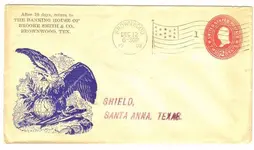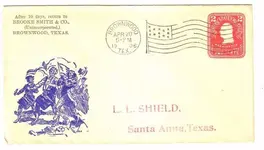Despite Bob Brewer's critics, the fact remains that his book "Rebel Gold", co-authored by "Wall Street Journal" writer Warren Getler, is one of the best-documented sources of the direct ties between the KGC and Freemasonry in existence. This is a quote I borrowed from the book and posted on our Bloody Bill group's message board over three years ago.
~Texas Jay
***
Information about Albert Pike from "Rebel Gold":
***
page 54 - "...Pike, born the same year as Abraham Lincoln, combined
elements from three important aspects of his life: membership in
Scottish Rite Freemasonry; political experience with the Whigs and
then with the short-lived anti-immigration, anti-black, anti-Catholic
Know-Nothings, followed by the Democratic Party; and, finally, legal
and Masonic connections with the Cherokee and other Nations in Indian
Territory (what is now Oklahoma) across the border from Arkansas.
With unprecedented speed, Pike rose through the higher ranks of the
Scottish Rite, and eventually wrote its key manifesto, 'Morals and
Dogma'. He had first become a Masonic brother in 1850 in Little
Rock, where he was initiated under the three 'Blue Lodge' degrees of
common - otherwise known as 'symbolic' or 'craft' - Masonry. (These
neophyte degrees - Entered Apprentic, Fellow Craft and Master Mason -
are stepping-stones to the higher degrees in the two main forms
or 'appendant' systems of American Masonry; the Scottish Rite and
York Rite. Most Masons today only participate in these lower, common
degrees of initiation in the fraternity and, unlike those initiated
into the advanced degrees, have no special knowledge of tightly held
secrets or ancient mysteries.) After advancing through the basic
degrees, Pike quickly received, by 1853, all ten additional degrees
of the York Rite, with its strong early-American roots in New
England. The top degree for a York Rite Mason happens to be that
of 'Knight Templar.'
Later that year, brother 'Knight Templar' Pike switched his fraternal
focus to the Scottish Rite, with its progressive thirty-third
degrees, exotic rituals, symbol of the double-headed eagle, and twin
credos of 'from chaos, order' and 'liberty, equality and
fraternity.' Formally, the Ancient and Accepted Scottish Rite of
Freemasonry confers twenty-nine higher degrees - including that
of 'Knight Kadosh' - up to the rank of thirty-second degree for those
over twenty-one years of age. It ultimately confers a final, thirty-
third, degree as an honorary title on a select few. Members of the
Scottish Rite Supreme Council are thirty-third-degree Masons.
***



 if considered.
if considered. .
.  ).
).
 Gary, you have a VERY nice KGC web-site... the OLD KGC ritual of the FIRST degree, ( I thought I had the SECOND), is that of the MILITARY degree from the Castroville, TX
Gary, you have a VERY nice KGC web-site... the OLD KGC ritual of the FIRST degree, ( I thought I had the SECOND), is that of the MILITARY degree from the Castroville, TX


 Yes, the "bad boys" of the SCOTTISH RITE, are "guilty as charged"!
Yes, the "bad boys" of the SCOTTISH RITE, are "guilty as charged"!  Yet, the RAM may have been involved, in terms of BURYING/EXCAVATING "treasure"... look at the RAM signet; a CROW BAR, PICK AX, SHOVEL... with the TRIPLE TAU; going "straight down", with "chambers" to the
Yet, the RAM may have been involved, in terms of BURYING/EXCAVATING "treasure"... look at the RAM signet; a CROW BAR, PICK AX, SHOVEL... with the TRIPLE TAU; going "straight down", with "chambers" to the  NOW!
NOW! 

